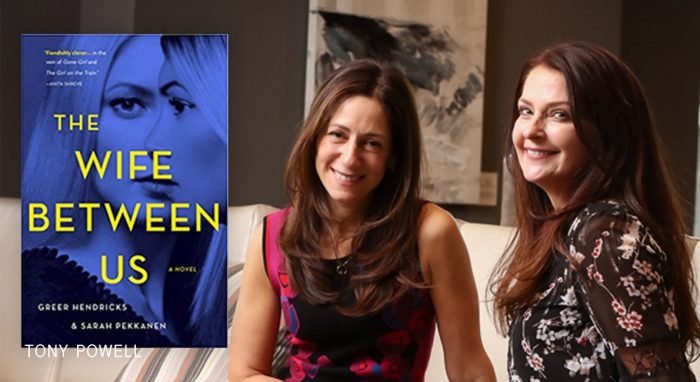Greer Hendricks’ and Sarah Pekkanen’s debut collaboration, ‘The Wife Between Us,’ showcases a thrilling partnership.

Greer Hendricks and Sarah Pekkanen
Critics are calling it “The Next Gone Girl,” or “This Year’s Girl on the Train.” It broke records at St. Martin’s Press, selling in 30 countries before its release. Steven Spielberg’s production company, Amblin, quickly snapped up movie rights to “The Wife Between Us” after reading only the opening section. It’s that good.
For co-authors and longtime friends, Bethesda-based Sarah Pekkanen (prolific author of women’s fiction) and New York-based Greer Hendricks (her former editor), their debut psychological thriller could only be written together, one Google doc line change at a time. We chatted with the duo, now at work on their second book, about feminism, friendship and their unique writing process.
Washington Life: How did this collaboration come about?
GH: We worked together on seven books. I was close to a lot of my authors but we developed a much more intimate relationship and discovered that there was an uncanny number of similarities that we had. We both had studied psychology and journalism, we both were terrible cooks, we were the same age, we have brothers we’re really close to named Robert. When I decided to leave Simon & Schuster after 20 years, I knew in the back of my mind that I wanted to try to write. I wasn’t telling many people but I confessed it to Sarah.
SP: I had just finished writing my seventh book and I said to Greer, “let’s write one together.” It was a very impulsive and instinctual thought. I went with my gut. We have such similar narrative instincts, we like the same books, and I just had the sense we could really do something special together.
WL: What made you decide on a thriller?
GH: We both laid out on our dining room tables the books that we most responded to over the past few years and there was a lot of overlap — Liane Moriarty books, “Gone Girl,” “Before I Go To Sleep.” We found that we were both drawn to books that had strong female protagonists and were psychological in nature, so even though Sarah had primarily written “women’s fiction” and that had been my expertise as an editor, we knew that we didn’t want to go that route. We wanted to try something a little different.
SP: That was a terrific surprise. We both wanted to write a psychological thriller but one with relatable characters. Extraordinary things could happen to them but it had to be rooted in reality. That was a big challenge we set early on.
WL: How did you work from different cities?
GH: My daughter set us up on Google hangouts and we literally wrote every word of the book together, which is unique because a lot of other co-authorships take on different characters or alternating chapters but we knew from the get-go that that was not what we wanted to do.
SP: We knew early on that we would be at our strongest together. If you pick up the book and look at ten lines, you won’t be able to tell us who wrote those lines and that’s because it’s a true collaboration.
GH: We send each other our schedules for the week and pretty much every week we’re working from 9:15 to 3:15 when Sarah’s youngest gets home. It’s sacred time for us.
WL: Did you plot the story before writing?
SP: Yes and no. We knew where the end of the first act was going and we plotted out generally toward the end of the book but it changed and evolved. We were constantly tearing up ideas. We say “what if” to each other a hundred times a day.
GH: And “better together.” Those are our two mottos.
WL: Do you consider it to be a feminist book?
SP: Yes. We love the idea that we are women writing stories of women and that a lot of people responding to it are also female. Holly [Bario, from Amblin] very early on wanted to option this material, within a week of selling it to the publisher. Strong, complicated, relatable women is something that we want to continue writing about. We also like the idea of women helping women, female empowerment and female collaboration. We are collaborators, obviously, and there is collaboration in the book.
WL: As you were writing, did you have in mind that it would be a movie?
GH: That was the dream. We write very visually. We didn’t write it to make it into a movie but that was certainly a theme for us.
SH: That’s the fun part. When you’re writing and everything is coming out clunky, it’s fun to pause and think who you would cast in the movie.
WL: Who would you cast?
GH: We’ve thought about Naomi Watts and Scarlett Johansson.
SP: I like Leo DiCaprio for Richard because I think he’s a really versatile actor.
This interview ran in the February 2018 issue of Washington Life Magazine.
